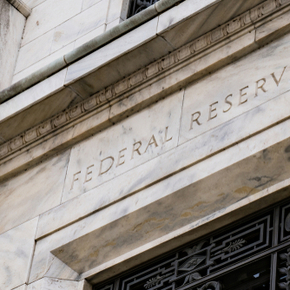The money and bond markets may have gotten a little complacent on inflation trends after the 2023 experience. Indeed, the peak readings of 2022 for both headline and core inflation were put in the rearview mirror rather quickly, as price pressures cooled off on an almost monthly basis.
WisdomTree
The Federal Reserve's decision to keep interest rates unchanged at the March FOMC meeting sparks a waiting game for investors, with the potential for rate cuts later in the year.
The 1995/1996 rate cut episode, which consisted of only three decreases worth 75 bps in total, serves as an interesting parallel to the current situation, where the market has finally 'come to the Fed' with respect to rate cut expectations for 2024.
Gold is a special asset that behaves differently to equities, bonds, commodities, and cryptocurrencies, making it a perfect diversifier to a portfolio.
The overarching outlook for fixed income in 2024 is centered on rate cuts, but we still haven't solved the timing and magnitude questions, which will continue to create an elevated volatility quotient for Treasuries until some clarity comes into the picture.
The tricky part comes now-the pivot for rate cuts. Interestingly, it doesn't seem as if the Fed is on the same page as the money and bond markets on the timing and magnitude for potential rate cuts.
The recent plummet in UST yields has sent shockwaves through the financial markets, with investors seeking clarification on what this shift means for the economy and monetary policy.
The recent earnings reports from major cybersecurity companies have shown promising growth, with many beating consensus expectations. This trend is expected to continue, driven by the increasing demand for cybersecurity solutions and the growing need for organizations to protect themselves against cyber threats.
The Fed's new mantra is to look at the totality of upcoming economic data releases to determine if their job is done, but even if there are no new rate hikes, rates need to remain in this restrictive territory for the foreseeable future.
The US economy has defied recession expectations, with the latest data showing a continued positive performance. Despite the cumulative 525 basis points of Federal Reserve rate hikes, the economy may still not be out of the woods, but signs are pointing to another positive performance for third-quarter real GDP.
The three-month moving average of new hiring has been consistently lower this year, a trend that is not as concerning as it might seem when compared to the pre-COVID-19 era.







